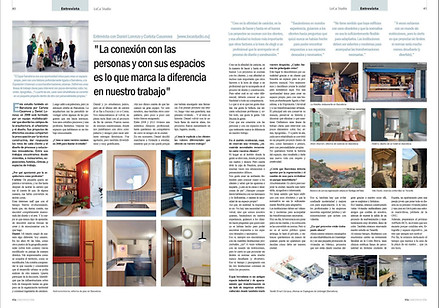100 VERSIÓ 2.0
Studies to examine the viability of dividing a Family House into five apartments with common spaces and services.
The main goal of the research and proposal is to demonstrate the feasibility of the project to ensure a new long life to the owners.
Chandigarn
workshop
URBAN PROPOSAL FOR THE CITY- PORT INTERFACE
The Barcelona City-Port interface is under continue transformation. The limit between the urban port and the industrial logistic area is under movement and is being continually displaced south, opposite to urban positions, in search for areas where to minimize conflict between urban and port activities. At the same time, physically constrained the city of Barcelona is in search for space to provide houses to new comers.
This proposal link port and urban interest through the creation of a continue slab that facilities logistic activities under while permits urban activities above, provide space to enlarge today’s straitjacketed transport infrastructures and solve the link between the city and the bigger park in town, Montjuïc.
1000 Versió 2.0
BARCELONA: SMART SALTY SPICY
Location: Riudecanyes
Surface: 7500 m2
Year: 2015
Collaborators: Sònia Lamesa,
Teresa Milián & Carla Lladó
Location: Port of Barcelona, Spain
Year: 2011
Architects: Carlota Casanova, Daniel Lorenzo
Mamen Domingo, Ernest Ferrè,



A TREE AND A SHELTER
Location: Unitat Predepartamental d’Arquitectura,
ETSA Universitat Rovira i Virgili
Year: 2014
Professors: J. M. Toldrà; J. Farreny; D. Lorenzo; F. Cifuentes; R. Miralles
L
CA
O
VIA Construccion
magazine: Vía Construcción nº170
Interview LoCa Studio
# MARZO 2025
P. 40-41

VIA Construccion
By Grupo Vía
In an exclusive interview with Grupo Vía, we share our journey as architects, philosophy, and current projects.
From our founding in 2008 to the transformation of Espai Serrahima, our focus has been on creative, functional, and people-centered solutions. A key aspect for us is the close collaboration with our clients to create spaces that are not only aesthetic but also vibrant.
We discuss challenges such as balancing preservation and innovation and our ongoing projects in Spain, Mexico, and beyond. Whether it's residential design, urban revitalization, or cultural concepts, our driving force remains the same: architecture that connects and inspires.
<- Read more in the full interview with Grupo Vía.
